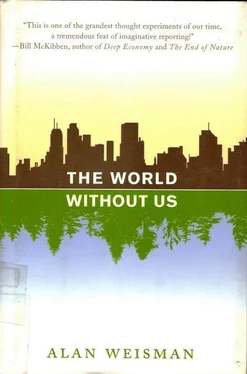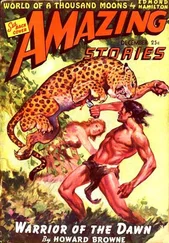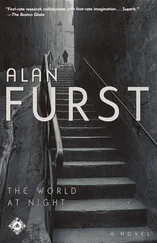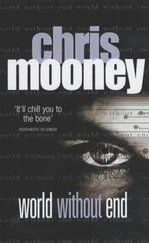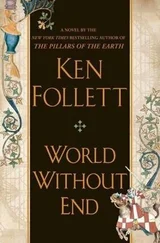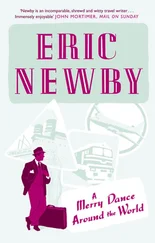Strategically parlaying alliances with other rival Mayan city-states, Dos Pilas metastasized into an aggressive international power whose influence advanced up the Río Pasión’s valley to today’s Mexican border. Its artisans planted stelae portraying a Dos Pilas k’uhul ajaw resplendent in jaguar-skin boots, with a naked, vanquished king crushed under his feet. Dos Pilas’s rulers amassed fabulous wealth. In caves where no human had been for 1,000 years, Demarest and his colleagues found where they hoarded hundreds of ornate polychromed pots containing jade, flint, and the remains of sacrificed humans. In tombs the archaeologists exhumed, royalty were buried with their mouths full of jade.
By AD 760, the domain they and their allies controlled encompassed more than three times a normal Classic Mayan kingdom. But they now barricaded their cities with palisades, spending much of their reign behind walls. A remarkable discovery bears witness to the end of Dos Pilas itself. Following an unexpected defeat, no more self-aggrandizing monuments were built. Instead, peasants who lived in concentric rings of fields around the city fled their houses, erecting a squatters’ village in the middle of the ceremonial plaza. The degree of their panic is preserved in the bulwark they threw up around their compound, made from facing materials ripped from a k’uhul ajaw ’s tomb and from the principal palace, whose corbeled temple was demolished and added to the rubble. It was the equivalent of tearing down the Washington Monument and Lincoln Memorial to fortify a tent city on the Capitol Mall. The desecration heightened as the wall ran right over the top of structures, including the triumphant hieroglyphic staircase.
Had these crude placements possibly occurred much later? That question was answered by the facing stones they found in direct contact with the stairs, with no intervening soil. The citizens of Dos Pilas, either beyond reverence for, or thoroughly outraged by, the memory of their greedy former rulers, did this themselves. They buried the magnificent carved hieroglyphic staircase so deeply that no one knew it existed until a Vanderbilt graduate student uncovered it 1,200 years later.
Did mounting population exhaust the land, tempting Petexbatún rulers to seize their neighbors’ property, leading to a cycle of response that spiraled into cataclysmic war? If anything, Demarest believes, it was the other way around: An unleashed lust for wealth and power turned them into aggressors, resulting in reprisals that required their cities to abandon vulnerable outlying fields and intensify production closer to home, eventually pushing land beyond its tolerance.
“Society had evolved too many elites, all demanding exotic baubles.” He describes a culture wobbling under the weight of an excess of nobles, all needing quetzal feathers, jade, obsidian, fine chert, custom polychrome, fancy corbeled roofs, and animal furs. Nobility is expensive, nonproductive, and parasitic, siphoning away too much of society’s energy to satisfy its frivolous cravings.
“Too many heirs wanted thrones, or needed some ritual bloodletting to confirm their stature. So dynastic warfare heightened.” As more temples need building, the higher caloric demand on workers requires more food production, he explains. Population rises to insure enough food-producers. War itself often increases population—as it did in the Aztec, Incan, and Chinese empires—because rulers require cannon fodder.
Stakes rise, trade is disrupted, and population concentrates—lethal in a rain forest. There is dwindling investment in long-term crops that maintain diversity. Refugees living behind defensive walls farm only adjacent areas, inviting ecological disaster. Their confidence in leaders who once seemed all-knowing, but are obsessed with selfish, short-term goals, declines with the quality of life. People lose faith. Ritual activity ceases. They abandon centers.
A ruin at nearby Lake Petexbatún, on a peninsula called Punta de Chimino, turned out to be the fortress city of the last Dos Pilas k’uhul ajaw . The peninsula had been severed from the mainland by three moats, one cutting so deeply into bedrock that approximately three times the energy required to build the city itself was expended to dig it. “That’s the equivalent,” Demarest observes, “of spending 75 percent of a nation’s budget on defense.”
It was a desperate society that had lost control. The spear points the archaeologists discovered embedded in the fortress walls—including on the inside—testify to the fate of whoever ended up cornered on Punta de Chimino. Its monuments were soon eaten by the forest: in a world relieved of its humans, man’s attempts to make his own mountains quickly melt back into the ground.
“When you examine societies just as self-confident as ours that unraveled and were eventually swallowed by the jungle,” says Arthur Demarest, “you see that the balance between ecology and society is exquisitely delicate. If something throws that off, it all can end.”
He stoops, picks up a sherd from the moist ground. “Two thousand years later, someone will be squinting over the fragments, trying to find out what went wrong.”
From a wooden crate on the floor of his office at the Smithsonian’s National Museum of Natural History, paleobiology curator Doug Erwin pulls an eight-inch chunk of limestone he found in a phosphate mine between Nanjing and Shanghai, south of China’s Yangtze River. He shows the blackish bottom half, replete with fossilized protozoa, plankton, univalves, bivalves, cephalopods, and corals. “Life here was good.” He points to the faint whitish line of ash that separates it from the dull gray upper half. “Life here got really bad.” He shrugs.
“It then took a long time for life to get better.”
It took dozens of Chinese paleontologists 20 years of examining such rocks to determine that the faint white line represents the Permian Extinction. By analyzing zircon crystals infused in tiny glassy and metallic globules embedded in it, Erwin and MIT geologist Sam Bowring precisely dated that line to 252 million years ago. The black limestone lying below it is a frozen snapshot of the rich coastal life that had surrounded a single giant continent filled with trees, crawling and flying insects, amphibians, and early carnivorous reptiles.
“Then,” says Erwin, nodding, “95 percent of everything alive on the planet was wiped out. It was actually a thoroughly good idea.”
Sandy-haired Doug Erwin looks improbably boyish for so distinguished a scientist. When he dismisses life-on-Earth’s closest brush with total annihilation, however, his smile isn’t flippant but thoughtful—the result of decades of poring over West Texas mountains, old Chinese quarries, and ravines in Namibia and South Africa to puzzle out what exactly happened. He still doesn’t know for sure. A million-year-long volcanic eruption through enormous coal deposits in Siberia (then part of Pangea, the single supercontinent) flooded the land with so much basalt magma—in places, it was more than three miles thick—that CO 2from vaporized coal may have glutted the atmosphere and sulfuric acid may have rained from the skies. The coup de grâce may have been an asteroid even bigger than the one that did in the dinosaurs much later; it apparently collided with the piece of Pangea we now call Antarctica.
Whatever it was, over the next few million years, the most common vertebrate was a microscopic-toothed worm. Even insects suffered a mass collapse. This was a good idea?
“Sure. It made way for the Mesozoic Era. The Paleozoic had been around for nearly 400 million years. It was fine, but it was time to try something new.”
Following the Permian’s fiery end, the few survivors had little competition. One of them, a half-dollar-sized, scalloplike clam called claraia , became so abundant that its fossils today literally pave rocks in China, southern Utah, and northern Italy. But within 4 million years, they and most other bivalves and snails that boomed after the mass extinction died out themselves. They were victims of more mobile opportunists such as crabs, who’d had minor roles in the old ecosystem, but suddenly—at least by the geologic clock—had a chance at creating new niches in a fresh new system. All it took was evolving a claw to crack open mollusks that couldn’t flee.
Читать дальше
